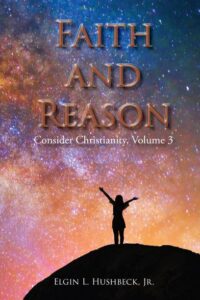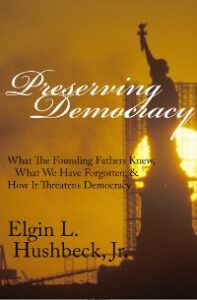Why Voting By Mail is a Really Bad Idea

How Voting by Mail Disenfranchises Voters
While there continue to be growing calls for nationwide voting by mail in November, it remains a very bad idea for many reasons. For one, voting by mail, along with early voting, distort the election process. Ideally, we have the campaign then we vote on election day. Now some states allow early voting for as many as 46 days in advance, greatly increasing the cost and complexity of campaigns. This problem led to the Trump administration’s request to move the debate schedule earlier. With this debate scheduled for September 29th, 16 states will have already begun early voting by this time. Early voting during the spring, effectively disenfranchised many voters because the candidate they voted for dropped out before the day of the election.
Most people do not follow politics very closely. Frankly, this is a good thing. Political campaigns focus on educating the voting public on the benefits of their candidate and the weakness of their opponent. At the same time, the opposition does the same for their candidate. An effective campaign requires building a strategy and then executing it. Doing this for a single fixed point, i.e., election day is hard enough. The larger the window for voting, the more difficult and costly this becomes. For incumbents, this is a huge advantage. The more difficult and costly campaigns, the safer incumbents are from challengers.
Problems With The Mail
While both voting by mail and early voting share this problem, at least with early voting, there is the security that if you vote, your votes will be received and counted. Voting by mail has additional problems in both of these areas.
The problem with receiving your ballot is that the process relies on the mail. In short, that you mailed your ballot does not mean your ballot will be received or received in time. Recently, CBS News in Philadelphia create 100 simulated ballots and mailed them to a P.O. box from various locations around the city. This simulated people voting by mail. A few days later, they repeated this with a second group of simulated ballots.
A week after mailing the first batch of ballots, three were missing. For the second batch, only 79 had arrived, although the P.O. Box did receive other pieces of misdirected mail, such as a birthday card. Even the 3 percent rate of missing ballots from the first set is larger than the margin of victory for Trump or Clinton in 9 states. These states accounted for 98 electoral votes, nearly three times Trump’s margin of victory.
Receiving Is Not Counting
Another issue with voting by mail is even if your ballot is delivered, it still can be rejected. In the recent spring election in California rejected 70,000 ballots because they arrive too late. Another 13,000 rejections occurred because people forgot to sign the ballot. Officials rejected an additional 14,000 ballots because the signature on the ballot did not match the signature or record. All totaled, officials rejected 102,000 ballots, and California is a state that routinely processes large numbers of absentee voting. It is important to remember that these are problems that do not occur with in-person voting. This margin of error is well beyond the margin of victory of many races.
Election Night Becomes Weeks
The increased use of voting by mail is also dragging out election night and threatening to turn every election into the chaos of the 2000 presidential election. In New York, six weeks after the primary election, the results remain undecided, and legal disputes raged over 12,500 absentee ballots.
Increasingly there is the candidate who wins on election night, and the candidate who wins after counting all the absentee ballots, sometimes weeks later. These are not always the same candidate, which undermines confidence in the electoral process. When the election is close, the deciding factor is often the courtroom and lawyers, rather than the ballot box and voters.
Fooled by Randomness
While it is tempting to think that such errors would be random, and thus affect both sides equally. Even if the first part is true, the second is probably not. That is not how randomness works. For example, with a roulette wheel, there is an equal chances for each number. But it is a fallacy to think that these numbers will come up equally in the short run. Over a very long period, the number of times a number comes up will be the same as the others. But, in the short term, one number might come up several times, while another number does not come up at all. Similarly, while possibly equally distributed in the long run, in any given election, there will almost certainly be a preponderance of these errors that favor one candidate or another.
To make matters worse, the errors will most likely not be completely random. A given mail carrier may be more careless; a given machine may have a problem. Problems such as these will result in rejection rates from some areas that are higher rates than others.
The Growing Problem Of Fraud
All these problems occur before we even consider the potential for fraud, which is a real problem and a growing one. By its very nature, voter fraud is difficult to prove or is only suspected. It often goes unnoticed. But not always. The Heritage Foundation keeps a database of voter fraud, which currently has 1290 proven cases of fraud resulting in 1113 criminal convictions. The cases for absentee ballots often involved multiple ballots. In some cases, the number of fraudulent ballots exceeded the margin of victory.
Finally, there is the potential problem that a foreign power could use the voter rolls to print large numbers of counterfeit ballots. They could overwhelm the system invalidating the election, or they could selectively add just enough votes to change the outcome.
A key issue here is many locations have bloated voter rolls. A recent study found 378 counties where “voter registration rates exceed 100% of the adult population. A sophisticated data operation could identify the voters on the list by error and submit counterfeit ballots under their name. If done correctly, it would be virtually impossible to detect. Again this is a problem that cannot happen with in-person voting.
Limit Mail In Voting
Given all this, states should restrict absentee voting to those who cannot go to the polls on election day. If nothing else, this will reduce the effects of these problems. There is an issue of scale here. Handling a small number of absentee ballots does not proportionally have the same problem as handling a larger number. The problems and difficulties increase faster than the number of ballots. If nothing else, a 3% – 5% error rate is unlikely to affect an election when there are only a very small number of absentee ballots. It could very well affect the outcome if most or all of the ballots are absentee. Voting by mail is a bad idea. It make sense only as a last resort for those who cannot otherwise make it to the polls.

